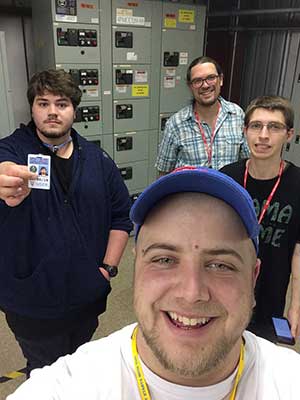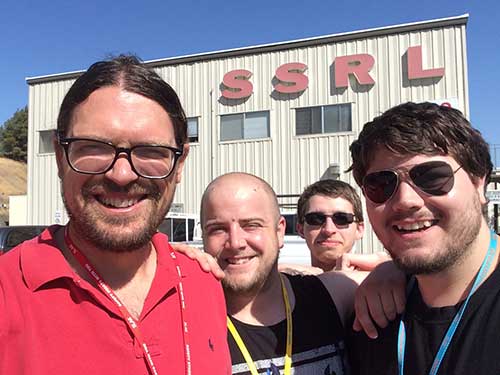University Communications and Marketing
July 27, 2018
MSU Billings students visit Stanford Synchrotron Radiation Light Source
Dr. Matt Queen and students will use research conducted to help create more effective compounds to clean up pollutants
Contacts:
University Communications and Marketing, 657-2266
MSU BILLINGS NEWS SERVICES —Montana State University Billings professor Matt Queen recently returned from the Stanford Synchrotron Radiation Light Source, a Department of Energy facility housed at Stanford University. This trip and the accompanying research was supported by MT-INBRE and the National Institute of General Medical Sciences of the National Institutes of Health.

The trip followed over a year of research done by Queen’s students to synthesize chemical compounds that have the potential to improve the breakdown of chlorinated ground water pollutants. Besides Houston, Songer and Fryett, Dr. Tom Lewis, a MSU Billings Professor of Microbiology, science majors Alyssa Hoffman, Siana Wiles, and Mohammad Heidari also contributed to the project but were unable to attend this trip.
Queen is working with Lewis to develop chemicals that clean up chlorinated pollutants in ground water; these pollutants can cause cancer in those who drink them. Queen and Lewis note that their current lead compound has been shown in the laboratory to clean up the pollutants in water, but it is unclear how it works. Queen, Lewis and their students are modifying this lead compound to better understand how the compound works, which will open the door to creating related compounds that clean up the chlorinated pollutants in contaminated water even more effectively.
“I always tell students ‘If you want to understand the way a chemical reacts with other chemicals, you have to understand where the electrons are,’” Queen explains. “The synchrotron allows us to go through our chemical compounds atom by atom to look at where the electrons are.”
The research group will spend the fall processing the synchrotron data and will have a better understanding of how their lead compound works. Following the analysis of the data, Queen, Lewis and their students will be using a supercomputer in Bozeman called the Hyalite Server to aid in the design of new, better-performing compounds for environmental cleanup efforts.
Houston, Songer, Heidari and Wiles, along with Fryett, will continue research with Queen and Lewis through next spring.

